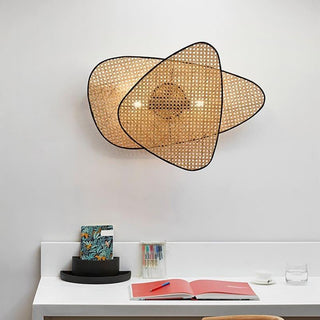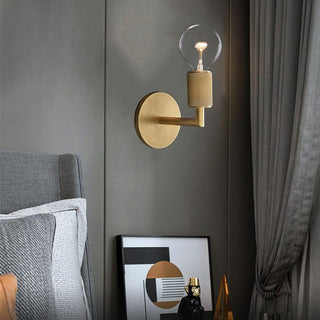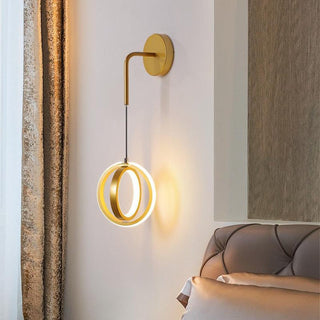When it comes to lighting, terms like lux, lumens, and watts are often tossed around. But what do they really mean? If you're selecting a lamp, designing an industrial environment, or trying to calculate the illumination for your building, understanding these terms is critical. This guide breaks it down for you in simple terms and offers practical tips for making the best decisions for your light source needs.
1. What are lux and lumens?
Let’s start with the basics. What are lux and lumens, and why do they matter?
What are lumens?
Lumens measure the total amount of visible light emitted by a source. This is the raw light output you get from a lamp or LED bulb. A lumen rating tells you how much light the product will produce. For example, a standard 60-watt incandescent bulb produces around 800 lumens.
What are lux?
 Lux is the unit of measurement of the light intensity on a specific surface. One lux is equal to one lumen per square meter.
Lux is the unit of measurement of the light intensity on a specific surface. One lux is equal to one lumen per square meter.
For example, if a lamp emits 1000 lumens and the light spreads evenly over 10m², the lux rating is 1000 lumens / 10 m² = 100 lux.
In simpler terms:
- How much light a lamp emits is measured in lumen
- How bright the light feels where it lands is measured in lux
2. The difference between lux and lumens

The key difference is what they measure. Lumens show the total amount of light a source gives off, while lux tells you how bright that light is on a specific area.
Useful metaphor
Imagine pouring water from a jug onto the floor of a room. The total amount of water in the jug stays the same, no matter how big the room is. The jug represents the lightbulb, and the water inside is the lumens. When you pour it out, how deep the water pools on the floor depends on the size of the room—that’s lux.
Practical examples
- A floodlight with high lumens might create a low lux level because it spreads light over a large area.
- A spotlight focuses its light in a small beam, resulting in a higher lux level on the lit area.
Why this matters
For spaces like an office, floor, or factory, lux ratings are critical to ensure proper illumination. Meanwhile, for choosing a bulb at home, focusing on lumens is typically sufficient.
When to use lux vs lumens
Focusing on lumens
Use lumens to select lighting products for general illumination, like choosing an LED bulb. For example, a 60-watt LED might produce 800 lumens while consuming significantly less power than a traditional bulb.
Focusing on lux
Use lux for specific applications where light intensity is crucial. This includes:
- Designing workspaces or factories where certain lux levels are required by standards.
- Evaluating race sport lighting or task lighting for precision work.
Calculating lux from lumens
The relationship between lux and lumens can be calculated using a simple formula:
Lux = Lumens ÷ Area (in square metres)
For example:
- A lamp with a lumen rating of 1200, lighting a 6m² table, results in:
Lux = 1200 ÷ 6 = 200 lux.
Distance and lux levels
Light intensity decreases as distance increases. This follows the inverse square law, meaning if you double the distance between the light source and the surface, the lux level drops to a quarter.
3. How lux and lumens are measured

Measuring lumens
Lumens are measured using an integrating sphere in laboratory conditions. This sphere captures the entire light output of a source and calculates its luminous flux. This value is the unit of luminous output displayed on many lighting products.
Luckily, you don’t need to do the math yourself—lumens are always listed on lightbulb packaging to make choosing the right one easy.
Measuring lux
Lux is measured with a light meter, which reads the intensity of light on a surface. To measure accurately:
- Place the meter at the desired point.
- Minimize ambient light and other light sources.
- Take a reading in lux.
Common tools
In modern technology, apps and handheld devices help measure lux levels, making it easier to design energy-efficient lighting systems for buildings or industrial spaces.
4. How many lux do you need in your room?

Understanding the appropriate lux levels for each room in your home is essential to create the right balance of functionality, comfort, and ambiance. Here’s a detailed breakdown of lux requirements for different spaces and activities.
High lux areas: kitchens and home offices
Certain rooms, like the kitchen and home office, demand bright lighting to ensure tasks are performed efficiently. These spaces typically require lux levels between 300–500 lux.
- Kitchens: Bright task lighting is essential for food preparation and cooking. Install LED under-cabinet lights to illuminate countertops and ensure there are no shadows. Overhead fixtures with higher lumen output also help maintain a well-lit environment.
- Home offices: Working or studying requires focused lighting. Use desk lamps with adjustable brightness or overhead lighting that provides clear visibility without glare. A lux level of around 500 ensures you won’t strain your eyes during extended periods of work.
Low lux areas: bedrooms and living rooms
For spaces meant for relaxation, such as bedrooms and living rooms, lower lux levels between 50–150 lux are more appropriate.
- Bedrooms: Softer lighting with warm tones creates a calm and inviting atmosphere. Use dimmable bedside lamps or low-intensity ceiling lights to adjust the lux levels based on time of day.
- Living rooms: Ambient lighting with about 100 lux is ideal for watching TV, reading, or socializing. Floor lamps, table lamps, and recessed lighting work well to spread light evenly and avoid overly harsh illumination.
Specialized spaces: bathrooms and hallways
Different areas in your home have unique lighting needs to balance practicality and aesthetics.
- Bathrooms: Bathrooms require both ambient and task lighting. The main area should have around 200 lux, while the area around the mirror may need up to 500 lux for tasks like shaving or applying makeup. Bright LED strips or wall-mounted lights near mirrors ensure precision.
- Hallways: Hallways are transit areas and don’t need intense lighting. A lux level of around 100 lux is sufficient for visibility. Use overhead fixtures or wall sconces to achieve this.
Outdoor spaces: driveways, patios, and gardens
Outdoor lux levels vary based on the function of the area.
- Driveways and pathways: Safety is the priority, so 50 lux is ideal for clear visibility. Solar-powered LED lights or motion-sensor fixtures are efficient options.
- Patios and gardens: These areas require softer, decorative lighting. Aim for 20–50 lux to create a relaxing ambiance. String lights or directional fixtures can help highlight specific features like plants or seating areas.
Room per room summary
| Area | Recommended lux level |
|---|---|
| Kitchen (ambient) | 110 |
| Kitchen (detailed task) | 540 |
| Dining | 50 |
| Living space | 50 |
| Living space (task) | 320 |
| Desk lighting | 430 |
| Bedroom (ambient) | 50 |
| Bedroom (reading) | 430 |
| Bedroom (dressing table) | 430 |
| Bathroom (ambient) | 50 |
| Bathroom (vanity area) | 320 |
| Laundry | 320 |
| Circulation (hallways, staircases, entryways etc) | 50 |
| Sewing | 540 |
| Garage/workshop | 110 |
| Small detailed task | 1080 |
| Outdoor (ambiant) | 20 |
| Outdoor (driveway and pathway) | 50 |
A very convenient calculator
Calculating how many lumens you need—and therefore how many lightbulbs to buy—can be a bit daunting.
Thankfully, there’s a very handy lighting calculator to simplify things.
Just input the type of room and its dimensions, and the calculator will automatically use the recommended lighting level for that space to determine how many lightbulbs you need.
Don’t forget to check the lumen rating on the lightbulbs to make sure they meet the suggested light intensity for your room!
5. Ambient light and lux levels

Ambient light significantly affects lux ratings. For instance:
- On an overcast day, daylight might provide around 1000 lux near a window.
- Add a lamp to the same area, and the lux level increases, but not dramatically due to the blending of light sources.
Managing ambient light
For accurate lux measurements, minimize sunlight or reflections from other sources. Use LED technology with dimming capabilities to achieve the desired levels of illumination efficiently.
6. Advanced insights: beyond lux and lumens

Candela as a unit of luminous intensity
In addition to lux and lumens, candela measures the directional intensity of light. This is useful for spotlights, where the focus is on how light is distributed in a specific direction.
Energy efficiency and lumen-to-watt ratio
Modern LED lamps are highly efficient, producing more lumens per watt than traditional bulbs. For example:
- A 10-watt LED bulb can produce as much light as a 60-watt incandescent bulb, reducing both heat and energy costs.
Designing for visual comfort
Lumen and lux ratings aren’t the only considerations. Human perception and comfort matter too. For instance:
- A well-lit office with evenly distributed lux feels more comfortable than one with concentrated light beams.
8. FAQs: clearing common confusions
Can I convert lumens directly to lux?
Not directly. Lux measures illuminance and is defined as lumens per square meter (luminous flux per unit area). The formula is:
Lux = Lumens ÷ Area (in square meters).
However, the distance between the light source and the surface also matters. As light travels, its intensity decreases due to the inverse square law. This means lux levels drop significantly as the distance increases. For example, a 1000-lumen light bulb creates a higher lux level on a surface 1 meter away compared to 2 meters away.
The type of fixture also affects lux. A spotlight focuses light in one direction, increasing lux over a small area, while a fluorescent light spreads it evenly, lowering lux across a larger space. Factors like reflectors, diffusers, and energy efficiency also play a role.
For precise results, use a light meter or an online calculator. These tools account for variables like distance and distribution, helping avoid confusion when planning lighting.
How does fixture type affect light?
Fixture type directly impacts lux, which measures how bright a surface appears based on the light it receives. While the bulb produces a fixed amount of lumens, the fixture determines how those lumens are distributed over an area, influencing the lux level.
- Fixture shape: fixtures with reflectors or focused designs concentrate light into a smaller area, increasing lux. For example, a spotlight directs light in a narrow beam, resulting in higher lux on the surface it illuminates. In contrast, fixtures with diffusers spread light over a larger area, reducing lux levels because the same amount of light is distributed more broadly.
- Fixture material: reflective surfaces like metal can enhance light direction, while frosted or opaque covers can absorb some light, lowering lux.
Choosing the right fixture is essential to achieve the desired brightness for the space, whether it's for focused task lighting or soft ambient illumination.
Final thoughts: making the right choice
When choosing lighting, understanding lux and lumens helps you design spaces that are not just bright, but also efficient and functional.
- Use lumens to assess the total amount of light a lamp or bulb emits.
- Use lux ratings to evaluate the illumination on a specific surface.
Whether you're working on an industrial building, an office, or your home, these measurements ensure you achieve the perfect balance of light intensity and energy efficiency. Take the time to measure, plan, and enjoy a well-lit environment tailored to your needs!



